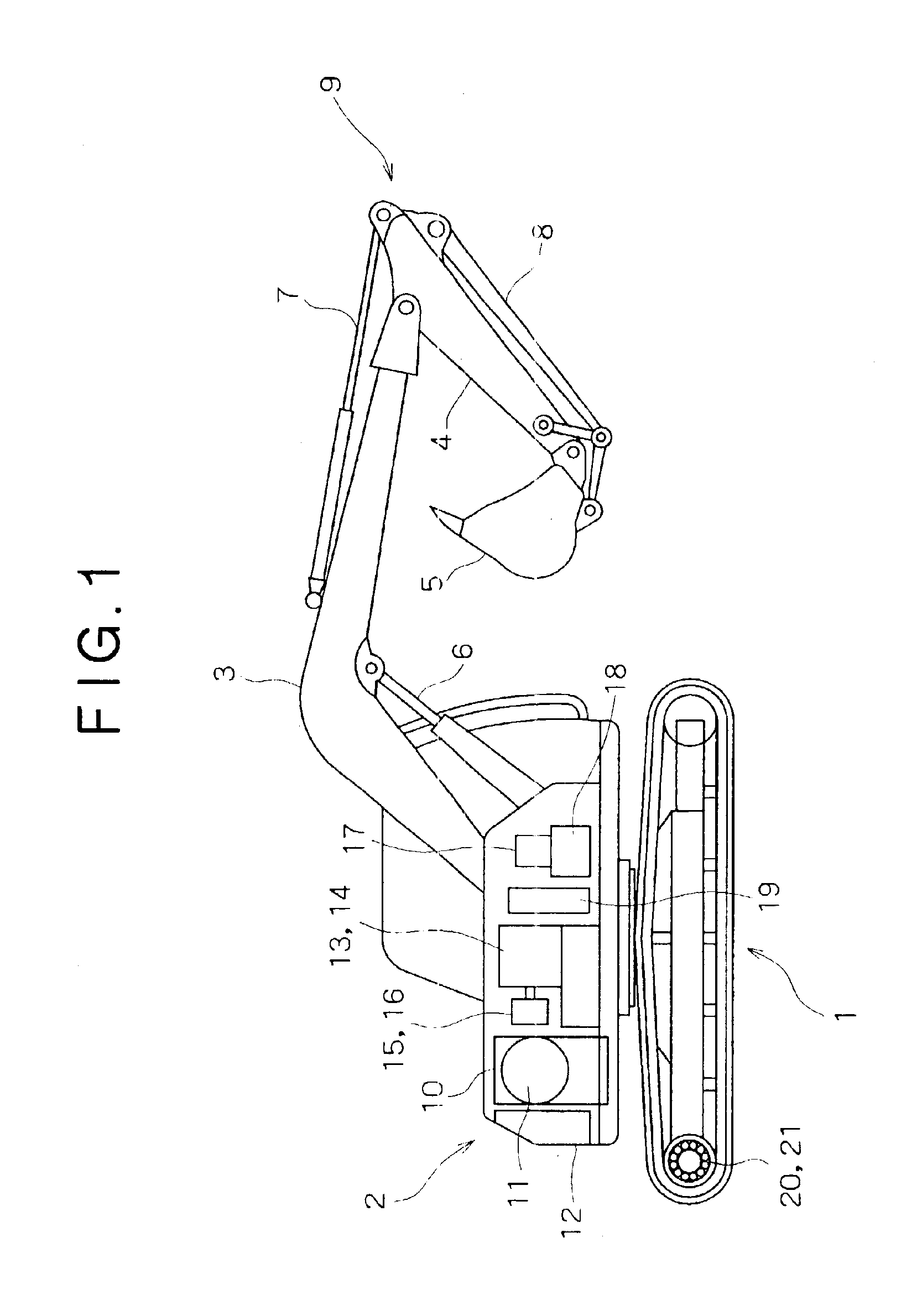Construction machinery
a construction machinery and construction technology, applied in the field of construction machinery, can solve the problems of increasing energy loss, low pump efficiency, and large energy loss, and achieve the effect of raising and lowering
- Summary
- Abstract
- Description
- Claims
- Application Information
AI Technical Summary
Benefits of technology
Problems solved by technology
Method used
Image
Examples
second embodiment (see fig.7)
Second Embodiment (See FIG. 7)
In the following second to fourth embodiments reference will be made to only different points from the first embodiment.
In the construction of the first embodiment bleed-off passages are provided in the control valves 33˜36 respectively, while in this second embodiment bleed-off passages are not provided in the control valves 33˜36, but a bleed-off valve 43 as an independent bleed-off means shared by the control valves 33˜36 is provided in a pump discharge circuit. In accordance with a command signal d, which is provided from the controller 32 on the basis of lever operation, the bleed-off valve 43 operates and exhibits the same valve characteristic as in the first embodiment.
According to this construction, the control valves 33˜36 become compact and it is possible to compensate for the decrease of a device mounting space caused by an increase of device types which results from the tendency to a hybrid configuration.
third embodiment (see figs.8 and 9)
Third Embodiment (See FIGS. 8 and 9)
In this third embodiment, bleed-off means is provided neither in the control valves 33˜36 nor in the exterior, and the number of revolutions of each electric motor (pump discharge rate) is controlled in accordance with lever operation quantity.
That is, as shown in FIG. 9, when the levers are in their neutral positions, the number of revolutions of the electric motor is zero, and at point A the number of revolutions of the electric motor begins to rise, then increases continuously as the lever operation quantities increase.
The strokes of the control valves are controlled in accordance with lever operation quantities, and at point A meter-in openings being to open (or are open slightly) and oil begins to flow in the actuators.
By so doing, there is no bleed-off portion and no flow that is throttled and discarded as bleed-off flow, thus resulting in a further advantage being obtained in point of energy saving.
The lever operation quantity vs. electric ...
fourth embodiment (see figs.10 and 11)
Fourth Embodiment (See FIGS. 10 and 11)
In this fourth embodiment there is used an electric motor 44 (fourth electric motor, indicated at M4 in FIG. 10) in place of a hydraulic motor as the rotating actuator and there is adopted a construction wherein:(a) the fourth electric motor 44 is controlled through an electric motor controller 45 in accordance with a number-of-revolutions command signal e which is provided from the controller 32 on the basis of lever operation, and(b) the electric motor 44 is allowed to operate as a generator during rotation braking.
The above control (a) may be a number-of-revolutions control or may be a torque control through current control, or even may be a composite control of both speed and torque, and is thus suitable for controlling a rotating operation of a hydraulic excavator which is large in inertia.
By the above control (b) there acts a regenerative brake and electric power obtained by the regenerative action is stored in the battery 12 or is utiliz...
PUM
 Login to View More
Login to View More Abstract
Description
Claims
Application Information
 Login to View More
Login to View More - R&D
- Intellectual Property
- Life Sciences
- Materials
- Tech Scout
- Unparalleled Data Quality
- Higher Quality Content
- 60% Fewer Hallucinations
Browse by: Latest US Patents, China's latest patents, Technical Efficacy Thesaurus, Application Domain, Technology Topic, Popular Technical Reports.
© 2025 PatSnap. All rights reserved.Legal|Privacy policy|Modern Slavery Act Transparency Statement|Sitemap|About US| Contact US: help@patsnap.com



